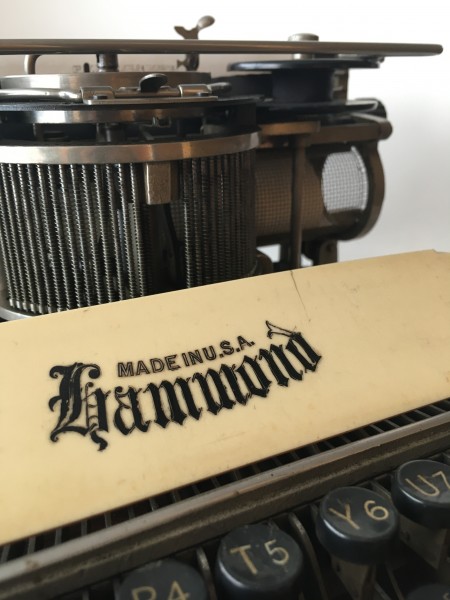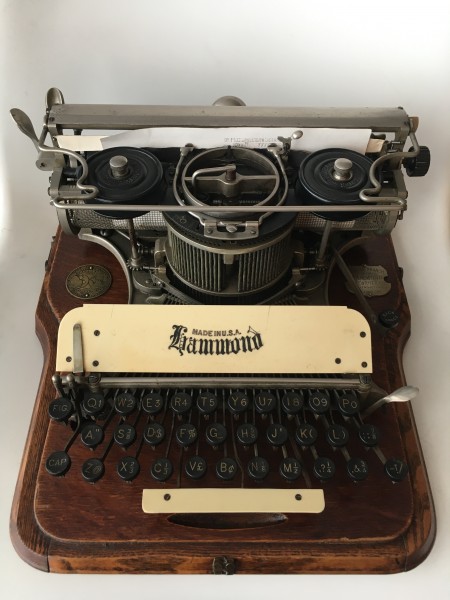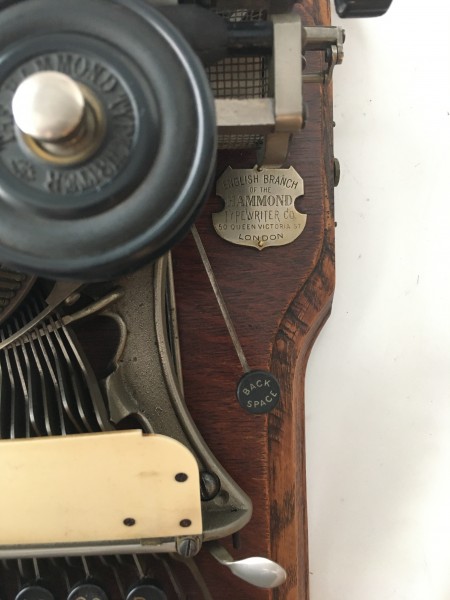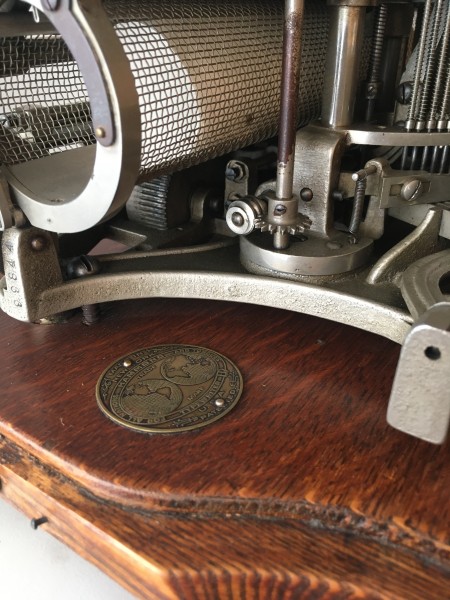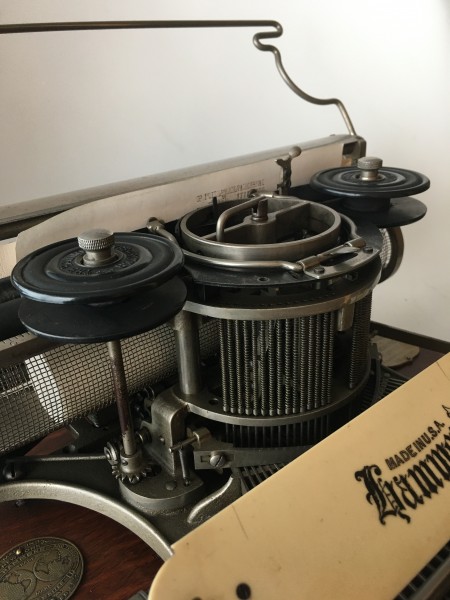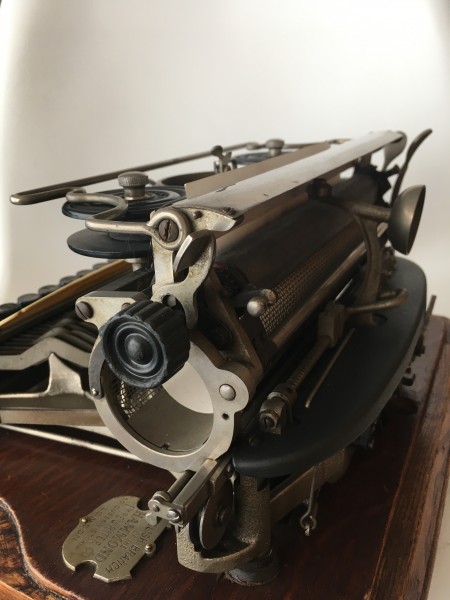Hammond N°12, 1905, USA
J. B. Hammond, telegrapher during the American Civil War, he was one of the first to realise that a typewriter would be a valid help in his job. E. J. Manning helped Hammond to make the typewriter, which was then patented in 1880 and put on the market in 1881 by the “Hammond Typewriter Company” in New York.
Hammond believed the typewriter had to allow the use of different alphabets and languages by simply replacing the typing support.
Hammond typewriters were characterized by a typing wheel or rather a typing shuttle, a semicircular rubber (later metal) strip that could be easily replaced. "For every nation, for every language" was the slogan of Hammond introduced to highlight the obvious strong point of this machine compared to the rivals: the use of different interchangeable shuttles for different styles, characters and languages.
In 1905, the company introduced the Hammond N.12, that introduced the vibrating ribbon on the top part of the turret, to make the writing process visible and no longer hidden by the central turret.
J. B. Hammond, telegrapher during the American Civil War, he was one of the first to realise that a typewriter would be a valid help in his job. E. J. Manning helped Hammond to make the typewriter, which was then patented in 1880 and put on the market in 1881 by the “Hammond Typewriter Company” in New York.
Hammond believed the typewriter had to allow the use of different alphabets and languages by simply replacing the typing support.
Hammond typewriters were characterized by a typing wheel or rather a typing shuttle, a semicircular rubber (later metal) strip that could be easily replaced. "For every nation, for every language" was the slogan of Hammond introduced to highlight the obvious strong point of this machine compared to the rivals: the use of different interchangeable shuttles for different styles, characters and languages.
In 1905, the company introduced the Hammond N.12, that introduced the vibrating ribbon on the top part of the turret, to make the writing process visible and no longer hidden by the central turret.

